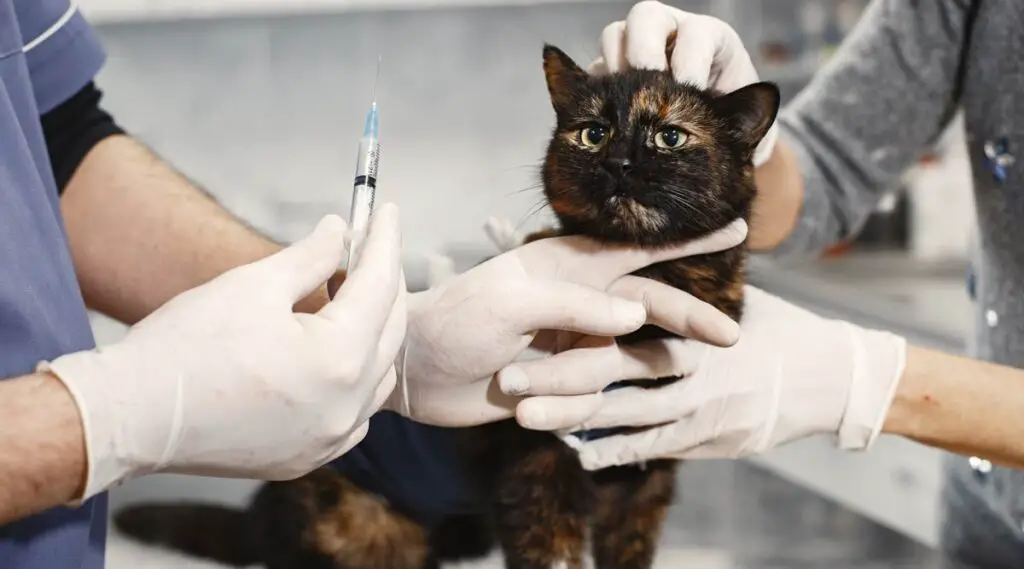Imagine a world where your feline companion is always healthy, happy, and content. A world where their coat is lustrous and free from tangles, their nails are neatly trimmed, their ears are clean and infection-free, and their teeth sparkle with vitality. This utopia can become your reality through the power of regular grooming. As a cat owner, you hold the key to unlocking your furry friend’s well-being by incorporating cat grooming into their routine.
Regular grooming not only enhances your cat’s appearance but also plays a crucial role in maintaining their overall health and happiness.
But why is grooming so essential? Well, let’s delve into the facts.
Did you know that brushing your cat’s coat regularly helps prevent hairballs and reduces shedding? Or that bathing them can eliminate dirt, odors, and potential skin irritations? Trimming your cat’s nails not only saves you from painful scratches but also prevents ingrown nails or deformities. Cleaning those adorable little ears safeguards against infections that can cause discomfort or even hearing loss.
And it doesn’t stop there! Brushing your cat’s teeth on a routine basis keeps dental diseases at bay while ensuring fresh breath kisses for years to come. Additionally, regular grooming allows you to inspect for any abnormalities in their skin or coat – early detection means timely treatment!
In this article, we will dive deep into each aspect of regular grooming: brushing coats diligently, giving soothing baths when necessary, mastering the art of nail trimming without stress or accidents, cleaning delicate ears gently yet effectively, keeping pearly whites shining bright with proper dental care – all while empathizing with the challenges faced by cat owners like yourself.
By following our expert advice and implementing these practical tips into your daily routine, you will pave the way toward optimal health and happiness for your beloved feline companion.
So let us embark on this journey together as we unlock the secrets to a healthier and happier life for your precious kitty.
Brushing Your Cat’s Coat Regularly
If you want to keep your cat’s coat healthy and free of tangles, you should make sure you’re regularly brushing it with a soft-bristled brush. Regular brushing is essential for shedding control and preventing matting in your furry friend.
Cats naturally shed their fur, especially during seasonal changes, and regular brushing helps to remove the loose hair before it ends up on your furniture or clothes. It also prevents matting, which can be painful for cats and may lead to skin infections.
By brushing your cat’s coat regularly, you’re not only keeping them looking sleek and beautiful but also promoting their overall health and happiness.
Now that you understand the importance of brushing your cat’s coat, let’s move on to the next step: bathing your cat.
Bathing Your Cat
When it comes to maintaining your feline companion’s well-being and contentment, giving them a bath is an essential aspect to consider. Regular baths not only keep your cat clean and fresh-smelling, but they also play a vital role in preventing skin infections and controlling excessive shedding.
Here are three important cat grooming tips for bathing your furry friend:
- Use cat-specific grooming supplies: Make sure to use shampoos and conditioners that are specially formulated for cats. Human products can be harsh on their sensitive skin.
- Choose the right temperature: Fill the tub with lukewarm water, as hot or cold water can cause discomfort. Test the water temperature before gently placing your cat into the tub.
- Be gentle and patient: Cats may not enjoy baths initially, so introduce them gradually. Use a soft cloth or sponge to wet their fur, avoiding their face and ears. Rinse thoroughly and dry gently with a towel.
By following these cat grooming tips and using appropriate supplies, you can ensure that bath time becomes a positive experience for both you and your feline friend.
So now let’s move on to trimming your cat’s nails without causing any stress or harm.
Trimming Your Cat’s Nails
To keep your feline companion comfortable and prevent any potential scratches, gently trim their nails. Nail care is an essential aspect of regular grooming for your cat’s health and happiness. By trimming your cat’s nails regularly, you can reduce the risk of them scratching you or other household members.
It also helps prevent their nails from becoming overgrown, which can cause discomfort or even lead to infections. According to a study conducted by the American Veterinary Medical Association, cats with well-maintained nails are less likely to exhibit aggressive behavior towards humans or other animals. By incorporating nail trimming into your grooming routine, you’re not only ensuring the safety of yourself and others but also promoting a peaceful environment for your furry friend.
Now let’s move on to another important aspect of grooming – cleaning your cat’s ears…
Cleaning Your Cat’s Ears
Taking care of your feline friend’s ears is like giving them a soothing symphony for their senses. Regularly cleaning your cat’s ears is crucial for their overall health and happiness.
Ear mites, tiny parasites that live in the ear canal, can cause discomfort and lead to infections if left untreated. By cleaning your cat’s ears, you can remove any dirt, wax buildup, or potential ear mites that may be present. This reduces the risk of ear infections and helps maintain optimal ear health.
Additionally, regular ear cleaning allows you to monitor for any signs of irritation or inflammation that may require veterinary attention. Remember to use a gentle cleanser specifically made for cats and avoid inserting anything deep into the ear canal.
Taking care of your cat’s ears ensures they can hear the world around them clearly and sets the stage for moving on to brushing their teeth.
Next up: brushing your cat’s teeth…
Brushing Your Cat’s Teeth
Ensure your feline companion’s oral hygiene remains impeccable by incorporating regular teeth brushing into their grooming routine. Just like humans, cats can also suffer from dental diseases if proper care isn’t taken.
Brushing your cat’s teeth helps prevent the buildup of plaque and tartar, which can lead to gum disease and tooth decay. It also improves overall oral health by reducing bad breath and maintaining strong teeth. According to studies, around 70% of cats over the age of three have some form of dental disease, making it crucial to prioritize their dental care.
To brush your cat’s teeth effectively, use a soft-bristled toothbrush and specially formulated toothpaste for cats that are safe to swallow. Start slowly and gently introduce the brushing routine, ensuring a positive experience for your furry friend.
By taking these simple steps, you can protect your cat from potential dental issues and promote their overall well-being.
Transition: Now that you’ve learned about the importance of brushing your cat’s teeth, let’s move on to checking for skin and coat abnormalities in our next section.
Checking for Skin and Coat Abnormalities
Now that you know the drill for brushing your furry friend’s teeth, let’s dive into the world of skin and coat abnormalities. Regular grooming isn’t just about keeping your cat looking good; it plays a crucial role in maintaining their overall health and happiness.
Skin allergies are common in cats and can cause discomfort and irritation if they’re left untreated. By regularly checking your cat’s skin and coat, you can catch any abnormalities early on. This includes things like rashes, sores, or hair loss. Catching these issues early allows you to seek proper treatment promptly, preventing further complications.
Additionally, regular grooming helps prevent common skin conditions, such as matted fur or flea infestations. So, remember to examine your cat’s skin for any changes during grooming sessions to ensure their well-being.
Now, let’s move on to the next important aspect of caring for your feline companion: regular veterinary check-ups.
Regular Veterinary Check-ups

Make sure you don’t overlook the significance of regular veterinary check-ups for keeping your feline companion in top-notch condition. Preventive care is crucial to maintaining your cat’s health and happiness, and regular check-ups play a vital role in this.
By bringing your cat to the vet on a regular basis, you can ensure that any potential health issues are detected early on. Early disease detection is key to successful treatment and can significantly improve your cat’s prognosis.
During these check-ups, the veterinarian will conduct a thorough examination, checking for any abnormalities or signs of illness that may not be noticeable to you. They may also recommend vaccinations or preventative treatments based on your cat’s specific needs.
Remember, regular veterinary check-ups are an essential part of responsible pet ownership and can help keep your feline companion healthy and happy for years to come.
Frequently Asked Questions
How often should I brush my cat’s coat?
To maintain your cat’s coat, brush it regularly using the appropriate brush for its breed. Regular grooming not only prevents matting and shedding, but also helps distribute natural oils, promotes blood circulation, and strengthens the bond between you and your feline friend.
Can I use regular shampoo to bathe my cat?
Yes, you can use baby shampoo on cats, but it’s important to avoid using dog shampoo. Cat’s skin is more sensitive and using the wrong product can cause irritation or even harm them.
What is the best way to trim my cat’s nails without hurting them?
Trimming your cat’s nails can be a real challenge, but don’t worry, we’ve got you covered! Use gentle techniques and positive reinforcement to make nail trimming a positive experience for both you and your feline friend.
How often should I clean my cat’s ears?
To properly clean your cat’s ears without causing discomfort, gently wipe the outer ear with a cotton ball or pad. Look for signs like excessive scratching or brown discharge to know if their ears need cleaning.
Are there any specific toothbrushes or toothpaste recommended for brushing my cat’s teeth?
To introduce a toothbrush to your cat, start by using a small pet toothbrush with soft bristles. Gradually acclimate your cat to the brush by offering treats and positive reinforcement. Choose a toothpaste specifically made for cats to ensure their safety.
Conclusion
In conclusion, regular grooming is vital for your cat’s health and happiness. By brushing their coat regularly, you can prevent matting and keep their skin healthy.
Bathing them helps to remove dirt and parasites, ensuring they stay clean and comfortable.
Trimming their nails prevents painful overgrowth and potential injury.
Cleaning their ears keeps infections at bay.
Brushing their teeth promotes oral health and prevents dental issues.
And by checking for skin abnormalities, you can catch any potential problems early on.
Remember, just like humans need self-care routines, your feline friend deserves the same level of attention to ensure a perfectly happy life!
Read more:






























